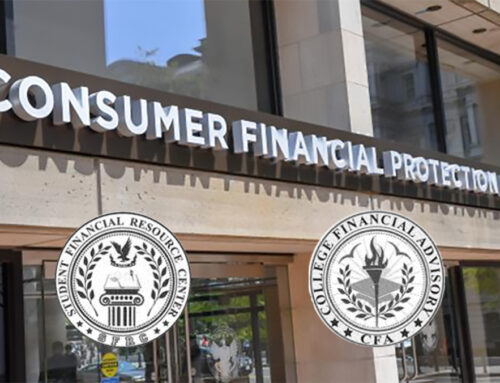Identity theft can feel like a daunting and nebulous threat. It’s out there, serious, and can cause you significant financial trouble.
But here’s the good news: you can take control.
By taking these simple, practical steps, you can protect yourself and your financial health.
Understanding Identity Theft
First off, let’s clarify what identity theft is. Simply put, it’s when someone steals your personal information, like your name, Social Security number, or credit card details, and uses them fraudulently.
This could mean making purchases in your name, opening new credit cards, or even filing taxes pretending to be you. The aftermath can be a damaged credit score, loss of funds, and a whole lot of stress as you try to clean up the damage.
Though anyone can fall victim to identity theft, children and seniors are particularly at risk. Children’s identities are attractive to thieves because they usually have a clean credit history, and seniors are the target of scammers because of their lack of familiarity with certain aspects of technology. Seniors are also less likely to seek help when a scammer victimizes them because they don’t want to be seen as less competent than their younger counterparts.
Step-by-Step Guide to Prevent Identity Theft
Step 1: Secure Your Personal Information.
Securing your personal information is your first line of defense. Shred sensitive documents rather than just tossing them in the trash.
Never give out your personal information on the phone or by email. Share sensitive information such as your Social Security number, date of birth, and any other identifiers only when necessary. Don’t complete online quizzes that could use your answers to recover your passwords.
Think of your personal information as the keys to your house – you wouldn’t just hand them out to anyone, would you?
Step 2: Strengthen Your Online Security
Next, let’s talk about your online presence. This is where a lot of identity theft happens, but it’s also a place where you can take significant preventive action. Use strong, unique passwords for your online accounts.
Enable two-factor authentication (2FA) whenever it’s available.
Use a password manager like 1Password if you’re comfortable with the technology. If not, write down your passwords in a notebook and lock it in a vault or safe.
Step 3: Empty Your Wallet
You carry a lot in your wallet. You’ve got your driver’s license, credit cards, and medical insurance card. You may carry your Social Security card with you. If you lose your wallet, an identity thief receives enough information to inflict major damage.
Remove your Social Security card from your wallet. Consider keeping your driver’s license in your car with your vehicle insurance card. Reduce the number of credit and debit cards you carry.
The less you have, the less you have to lose.
Step 4: Be Aware of Scams
Scammers are crafty and have all sorts of tricks to get your personal information. They might pose as your bank, a government agency, or even a loved one in need.
Stay skeptical and verify the source before sharing your information. When in doubt, reach out directly to the institution in question.
Step 5: Monitor Your Credit Reports
Keep a close eye on your credit reports by checking them often. They can offer early warning signs of identity theft, such as unexpected credit inquiries or new accounts you didn’t open.
Consider placing a fraud alert on your credit reports.
If you see a problem, contact the credit reporting agency and the credit company immediately.
A Little Caution Goes a Long Way
Preventing identity theft might seem overwhelming, but remember – it’s all about taking one simple step at a time.
By securing your personal information, strengthening your online security, protecting your information, being vigilant about scams, and monitoring your credit reports, you’re building a solid defense against identity theft. There’s no guarantee your identity will be safe, but by reducing the risks you can minimize the chances of being a victim of identity theft.
ABOUT THE AUTHOR
Meet Jay
 Since I became a lawyer in 1995, I’ve represented people with problems involving student loans, consumer debts, mortgage foreclosures, collection abuse, and credit reports. Instead of gatekeeping my knowledge, I make as much of it available at no cost as possible on this site and my other social channels. I wrote every word on this site.
Since I became a lawyer in 1995, I’ve represented people with problems involving student loans, consumer debts, mortgage foreclosures, collection abuse, and credit reports. Instead of gatekeeping my knowledge, I make as much of it available at no cost as possible on this site and my other social channels. I wrote every word on this site.
I’ve helped thousands of federal and private student loan borrowers lower their payments, negotiate settlements, get out of default and qualify for loan forgiveness programs. My practice includes defending student loan lawsuits filed by companies such as Navient and National Collegiate Student Loan Trust. In addition, I’ve represented thousands of individuals and families in Chapter 7 and Chapter 13 bankruptcy cases. I currently focus my law practice solely on student loan issues.
I played a central role in developing the Student Loan Law Workshop, where I helped to train over 350 lawyers on how to help people with student loan problems. I’ve spoken at events held by the National Association of Consumer Bankruptcy Attorneys, National Association of Consumer Advocates, and bar associations around the country. National news outlets regularly look to me for my insights on student loans and consumer debt issues.
I’m licensed to practice law in New York and California and advise federal student loan borrowers nationwide.
continue reading


